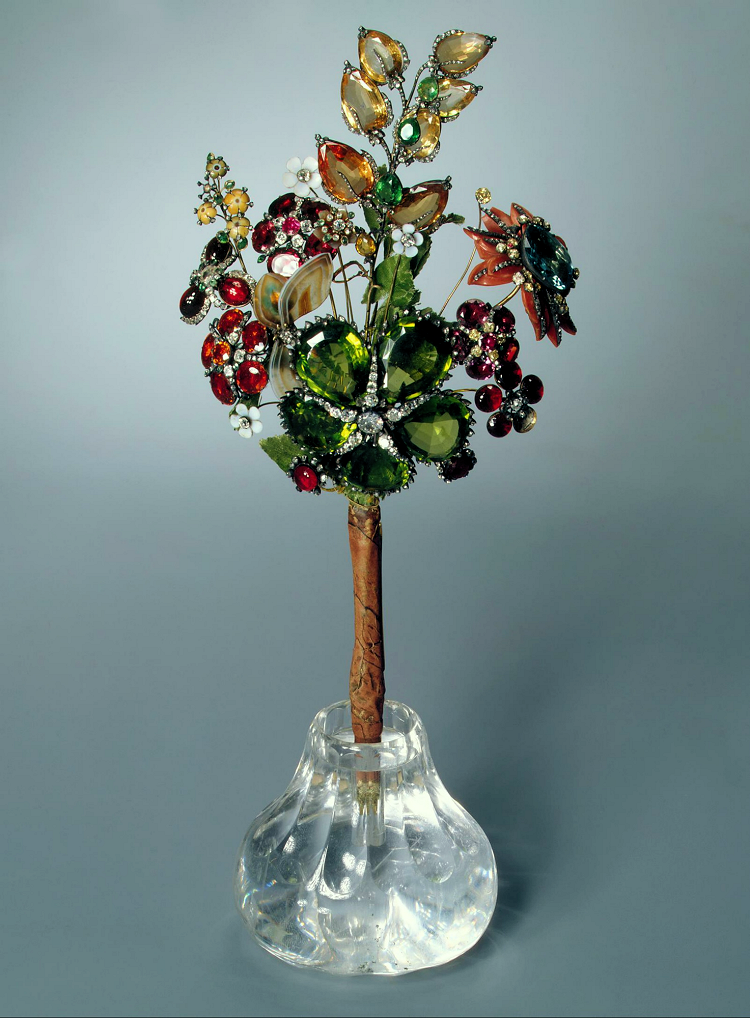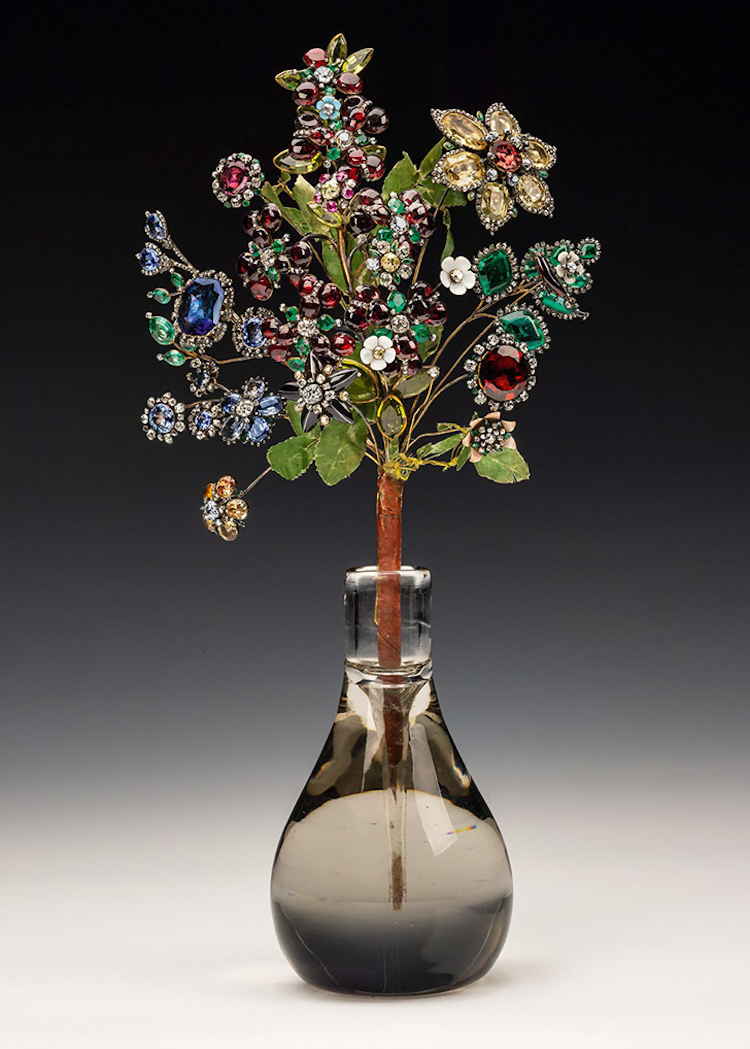He studied for seven years with Benedict Gravero in Saint Petersburg, but soon the student surpassed the skill of the master. In 1740, under the patronage of Empress Anna Ioannovna, he opened his own small workshop and received the title of the court jeweler. He specialized in setting diamonds and other precious stones; for work with unornamented metals, he hired subcontractors. During the reign of Anna's successor, the Empress Elizabeth, his fame and influence continued to grow, which often put him at odds with Ekart, the chief court jeweler. Besides his work for the empress, he produced much jewelry for the aristocracy.
The Empress Elizabeth died in 1761, and after disposing of her inconvenient husband, Catherine the Great ascended the throne the following year. For her coronation - rushed to gloss over her usurping of power - both of the rival jewelers were entrusted with the making of a new Imperial Crown, the creation of which proved contentious. Pauzié's artistry prevailed, though, and the massive crown was a great success in spite of everything and was subsequently worn at every coronation until the fall of the empire. Having survived the Soviet sales of Romanov treasure, the crown remains today on display in the Moscow Kremlin Armoury Museum.
Pauzié left Saint Petersburg in 1764 and returned to Switzerland. In 1770 he once again settled in the place of his birth where he died nine years later. His "Memoirs of a Court Jeweler" were published in Russia in 1870.
 |
| Portrait of Pauzié by an unknown artist, 1762. |















Where are these now? Were they made only for the royals?
ReplyDeleteIt appears - though I haven't been able to get clear confirmation of this - that the bouquets are in the Hermitage collection. Since Pauzié did work for the aristocracy as well as the imperial family, it seems likely that similar objects were made for those clients, but I don't really have any information about that.
Delete